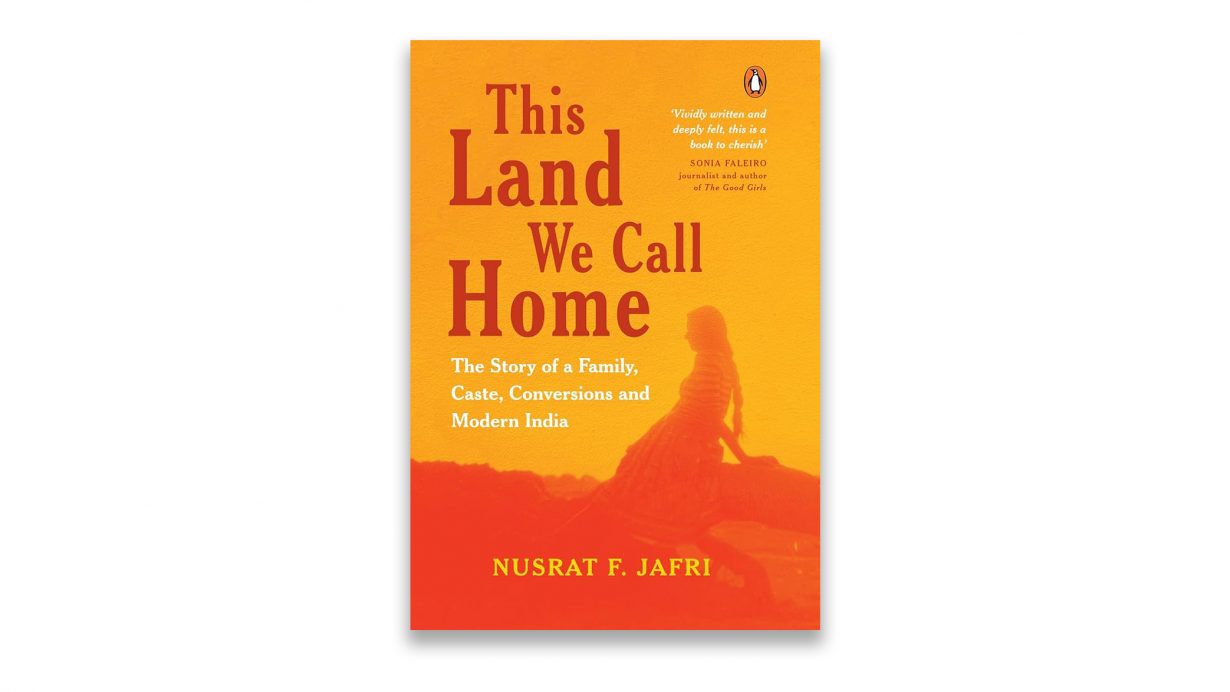
Nusrat F. Jafri’s lively memoir of her own family’s social mobility is overshadowed by lengthy Wikipedia-like accounts of India’s history
The complex family lineage to which Nusrat F. Jafri belongs is illustrative of the various social systems that are used to shape the identity of India’s citizens: from caste, class and religion to language and ethnography. Her paternal ancestors trace their origins to Iran and Iraq, while her maternal ancestors were, Jafri says, ‘perhaps one of the original inhabitants of India’. Even more intriguingly, in this memoir, her first book, the author discusses how conversion gave her relatives education and employment opportunities, and in turn the social mobility inaccessible to them if they had remained Bhantu, one of the many tribes once classified as ‘criminal’ by the British.
Alongside this personal narrative runs a bigger story, that of India’s growth as a nation, and it’s unfortunate that this overshadows the more intriguing elements of Jafri’s own story. Historical accounts are related in great detail, from the participation of Indian soldiers in the First World War, the 1918 flu pandemic and Independence, to the Emergency years (1975– 77), the demolition of the Babri Masjid mosque (1992) and the rise of the right wing and more general intolerance within India marked by the Modi years. Landmarks in popular culture, such as the Binaca Geetmala radio show (on air from 1952 to 1994) and Ramanand Sagar’s cult 1987 TV series Ramayan, are also thrown into the mix. While these were all important events in India’s history, and Jafri’s relatives were no doubt affected by having lived through these decades, the detail she goes into feels unnecessary.
Jafri’s great-grandfather Hardayal Singh was born a Bhantu, making him part of a nomadic pastoral tribe that would go on to be designated, in 1871, along with 149 other tribal communities, as ‘criminal tribes’ by the British government. The categorisation of castes at the lowest rung of the social ladder as ‘inherently criminal’ was as much to bring nomads under colonial rule as it was a continuation of the Hindu varna system, where professions were assigned to people at birth, depending on the father’s caste and sub- caste. ‘Caste is unforgiving,’ Jafri writes – the Bhantus, though they claim to have Rajput warrior origins, are considered a ‘low caste’.
This designation often results in abject poverty because of social ostracisation (access to opportunities that would allow for a livelihood to be secured are withheld by those higher up), which leads to some of these ‘untouchable’ tribes resorting to robbery. Those targeted by the government (‘suspicious tribes and inherently criminal individuals’) are forcefully encamped in reformatory colonies on the outskirts of villages and towns. The initial Criminal Tribes Act was repealed only to be replaced by the equally discriminatory Habitual Offenders (Control and Reform) Act in 1952, and members of former ‘criminal tribes’ continue to face systemic oppression by the police and judiciary.
Discrimination led Singh to convert to Christianity along with his wife and daughters. Jafri writes of how early missionary movements in British India focused on the intolerance and inequality in the Hindu caste system to evangelise and get vast numbers of oppressed peoples to convert, promising them a casteless new identity, education and, above all, respect and equality. Large parts of the book are dedicated to a Wikipedia-like history of Evangelical and Methodist Church missions started in India, the many schools and hospitals they would go on to found, the architecture of the churches they built and so on. This rosy portrait – and, to be fair, Jafri clearly acknowledges this favourable view – does not factor in later criticisms of missions: that they actively sought to disparage local customs, languages and Indigenous traditions. Jafri admits that the promise of castelessness, which her family went on to discover is far from true, came at a hefty price for those who chose to convert.
And yet, while the caste system is traditionally linked to India’s Hindu society, Jafri rightly acknowledges that it is deeply embedded in Islam and Christianity as well. The author reminds us of the grim reality that how one looks or what one wears or eats is hardly about personal choice in India; that her family, despite their journey through religions, social mobility and urban lifestyles, is still bound by ancient systems of oppression and historic bonds of caste and community that remain inescapable.
This Land We Call Home: The Story of a Family, Caste, Conversions and Modern India by Nusrat F. Jafri. Penguin Random House India, ₹699 (hardcover)